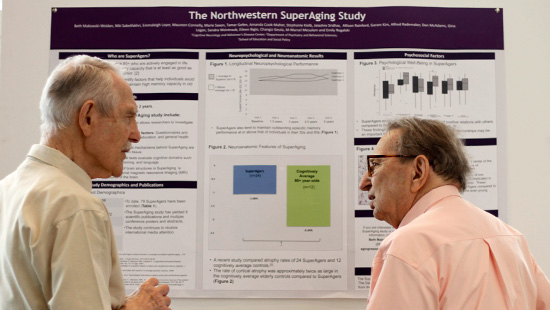About Us
Read a Message from the DirectorThe Mesulam Center for Cognitive Neurology and Alzheimer’s Disease at Northwestern University Feinberg School of Medicine is committed to providing quality care through our affiliated care sites, conducting research on how the brain coordinates mental functions, transferring the benefits of research to afflicted patients and preparing future scientists and clinicians in our field.
Our Mission
- To conduct research on the neurobiology of brain aging and dementias.
- To investigate the cognitive networks affected by the underlying disease.
- To develop personalized diagnostic, clinical care and intervention modalities.
- To train the clinicians and bench scientists of the future.
Who We Are
Advisory Board
Board members work to increase public awareness and knowledge of our center.Members
Browse a list of members affiliated with the center to learn about their research and clinical backgrounds.Contact Us
If you have any questions or comments for the Mesulam Center staff, please get in touch. You can also visit our Employment Opportunities page to learn more about joining our team.Keep in Touch

We encourage alumni affiliated with the center to stay connect to each other and the Feinberg community as a whole. Visit our Alumni page to learn more.
You can also sign up to receive our digital and print newsletters to keep up-to-date with the center.
Selected Works of Dr. Mesulam
We’d like to thank our center’s founder M. Marsel Mesulam, MD, for his many contributions to our field.
